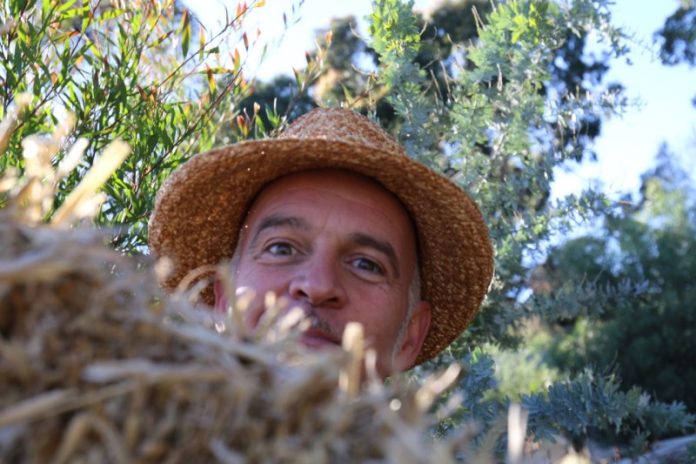There is a bit of confusion out there between ‘straw’ and ‘hay’. You hear them used interchangeably but they are quite different products and play different roles in our compost piles. Let’s have a look at what makes each distinct.
Hay is grass or other pasture plants that are cut when they are still green but (usually) before they have gone to seed. Hay is cut and baled as animal feed, the best hay being cut when the pasture is at its peak nutrition for grazing animals, this means hay has a high nitrogen content, great for animals fattening up or making milk.
Once hay is cut, it needs to dry out in the sun just enough for it to keep – hence the old saying “make hay while the sun shines” – but should still be green and smell beautifully ‘grassy’ when it is baled.
If hay gets wet again it will start to compost on its own, much like fresh cut grass, turning slimy and tending to slump and get anaerobic.
Good hay is more expensive than straw, and really, we don’t want to take animal-quality feed and make compost with it, when there are so many other free or cheap materials to make compost with. But sometimes stored hay gets wet or mouldy – making it no longer useful or safe as animal feed – this is when composting can make sense, but remember hay will not be adding carbon-rich materials to your pile, even if the hay looks a bit dry.
Straw is the left-over stems of plants that have gone to seed. The seed or crop has been harvested, and only the stems remain, essentially an agricultural ‘waste’ product. The texture of the straw can vary lots depending on the crop, from very woody and hard, to soft and fluffy.
Even though it is a ‘waste’ product, still expect to pay for the bailing, storing and handling work in each bale – our farmers still need a fair wage for this work.
Straw is a great addition to our compost piles, with a much lower nitrogen content (and therefore higher carbon to nitrogen ratio) than hay. The nitrogen-rich kitchen scraps and green garden prunings we regularly add are balanced by a good addition of carbon-rich straw, which will also add structure and aeration though our piles.
Straw is always great to have around when we are making compost, and at YIMBY, we encourage our composters to always have a bale or two on hand.
Hay, on the other hand, is valuable animal feed, and really only belongs in our compost if it is spoiled, and should be treated like fresh grass. Use sparingly, adding other carbon-rich ingredients for balance and structure.
Next week we have a look at finishing compost.
– Joel Meadows works with *Yes In My Back Yard, (YIMBY), a community-scale composting initiative in Castlemaine and surrounds. Send questions or comments to hello@yimbycompost.com








